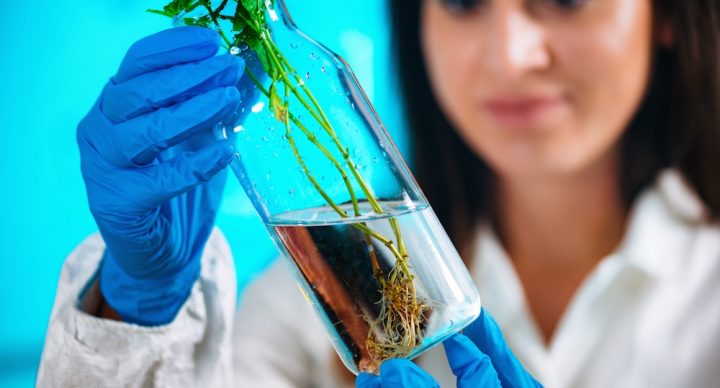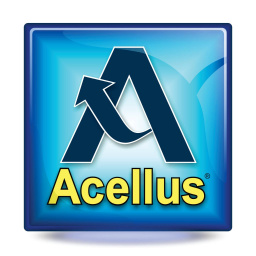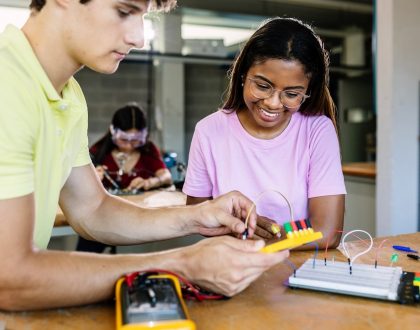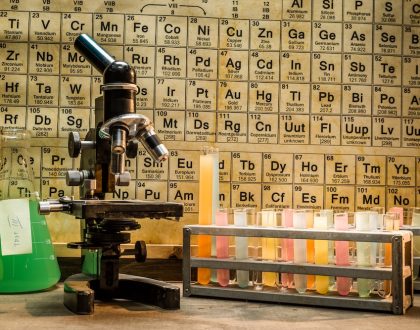Integrated Science 1

Course Features
Course Details
Course Overview
The Integrated Science 1 course provides a comprehensive exploration of life, earth, and physical sciences, fostering scientific curiosity and critical thinking in students. Through hands-on labs, engaging lessons, and real-world applications, students will develop a solid foundation in scientific principles, including the scientific method, biological processes, earth systems, and physical phenomena. The course integrates key concepts across disciplines, encouraging students to connect ideas and apply their knowledge to solve problems, preparing them for advanced scientific study.
 This course was developed by the International Academy of Science.
Learn More
This course was developed by the International Academy of Science.
Learn More
Scope and Sequence
Unit 1: Foundations of Science In this unit, students will build a strong foundation in scientific inquiry by exploring the core principles and tools of science. They will learn about the branches of science, essential vocabulary, and the metric system, gaining the language and measurement skills needed for scientific study. Students will also master the scientific method, understand the use of tools like microscopes, and prioritize lab safety through lessons on safety rules and symbols. Practical activities, such as the Chemical Color Lab, will reinforce their understanding of scientific processes and safety protocols. Unit 2: Ecosystems and Evolution This unit delves into the interconnectedness of life and the environment, focusing on ecological systems and the history of life on Earth. Students will explore food webs and food chains, learning how energy flows through ecosystems. They will investigate the history of life, evidence of evolution, and the characteristics of various biomes, including land, forest, and water environments. Lessons on natural cycles, such as the carbon and water cycles, will help students understand the dynamic relationships between organisms and their environments, fostering an appreciation for ecological balance. Unit 3: Cells and Life Processes In this unit, students will uncover the fundamental building blocks of life by studying cells and their functions. They will learn about the five basic life processes, the needs of living things, and the chemistry that sustains life. The unit covers cell theory, levels of biological organization, and the structure and function of plant and animal cells. Through activities like the Cell Pizza Lab and lessons on cell processes, division, and mitosis, students will gain a deeper understanding of how cells operate and contribute to the growth and survival of organisms. Unit 4: Skeletal and Muscular Systems This unit focuses on the structure and function of the skeletal and muscular systems, emphasizing their role in human movement and support. Students will explore different types of tissues, the characteristics of the skeletal system, and the specific bones of the arm and hand. They will also learn about skeletal joints and the muscular system, including key muscles of the body. By examining how these systems work together, students will develop an appreciation for the complexity of the human body and its ability to perform coordinated movements. Unit 5: Nutrition and Digestion In this unit, students will explore the science of nutrition and the digestive system, learning how the body processes food to sustain life. They will study the six food groups, the six basic nutrients, and the structure and function of the digestive system. Lessons on digestive parts will provide insight into how food is broken down and absorbed. By connecting nutrition to overall health, students will understand the importance of balanced diets and the role of digestion in providing energy and nutrients for bodily functions. Unit 6: Circulatory, Respiratory, and Other Body Systems This unit examines the interconnected systems that maintain the body’s vital functions, including the circulatory, respiratory, excretory, integumentary, and endocrine systems. Students will learn about the heart, blood, and the body’s immune defenses, as well as the mechanics of breathing and waste elimination. They will also explore the role of the skin and hormones in regulating body processes. Through these lessons, students will gain a holistic understanding of how these systems work together to support life and protect the body from harm. Unit 7: Nervous System and Senses In this unit, students will investigate the nervous system and its role in controlling body functions and processing sensory information. They will learn about the central and peripheral nervous systems, exploring how they coordinate responses to internal and external stimuli. Lessons on the senses will highlight how the body perceives and interprets the environment. By studying the systems of the body as a whole, students will understand the complexity of neural communication and its critical role in maintaining homeostasis and enabling interaction with the world. Unit 8: Rocks and Minerals This unit introduces students to the geological processes that shape Earth’s surface, focusing on rocks and minerals. They will learn about mineral identification, formation, and the characteristics of igneous, sedimentary, and metamorphic rocks. The rock cycle will illustrate how rocks transform over time, while lessons on Earth’s natural resources and soil will highlight their importance to ecosystems and human life. Through these explorations, students will develop an understanding of Earth’s geological diversity and the processes that sustain its resources. Unit 9: Water Resources In this unit, students will explore the critical role of water in Earth’s systems, focusing on the water cycle and freshwater resources. They will learn about frozen and underground freshwater, the challenges of water shortages, and the process of desalinating saltwater. By examining fresh water as a vital resource, students will understand the importance of conservation and sustainable management. Practical applications, such as studying the water cycle, will reinforce their appreciation for water’s role in supporting life and shaping the environment. Unit 10: Earth’s Atmosphere This unit delves into the composition and dynamics of Earth’s atmosphere, exploring its layers, air pressure, and environmental impacts. Students will learn about the tools used to measure atmospheric conditions, such as barometers, and investigate phenomena like air pollution and the greenhouse effect. Hands-on activities, such as the Can Crusher Lab, will demonstrate the effects of air pressure. By studying these concepts, students will gain insight into the atmosphere’s role in weather, climate, and the health of the planet. Unit 11: Weather Factors In this unit, students will investigate the factors that drive weather patterns, including energy from the sun, heat transfer, and wind. They will learn about humidity, cloud formation, and precipitation, engaging in activities like building an anemometer and creating a cloud. Lessons on local and global winds, as well as global wind belts, will provide a comprehensive understanding of atmospheric circulation. Through these explorations, students will develop the ability to analyze weather phenomena and their impact on daily life. Unit 12: Weather Patterns This unit focuses on the large-scale weather patterns that shape regional climates, including air masses, fronts, cyclones, and anticyclones. Students will learn about severe weather events such as thunderstorms, tornadoes, hurricanes, and snowstorms, exploring their causes and impacts. A hands-on activity, Tornado in a Bottle, will bring these concepts to life. By studying these patterns, students will understand the dynamic nature of weather systems and their influence on human and environmental systems. Unit 13: Weather Prediction In this unit, students will explore the science of weather forecasting, learning how meteorologists predict weather using technology and data analysis. They will study weather maps, weather technology, and the importance of disaster preparedness, including creating a preparedness kit. By engaging with these concepts, students will develop an appreciation for the complexity of weather prediction and its critical role in protecting communities and planning for extreme weather events. Unit 14: Energy and Motion This unit introduces students to the fundamental concepts of energy and motion, laying the groundwork for understanding physical science. They will learn about different types of energy, including kinetic and potential, and explore the concepts of speed and velocity. Through these lessons, students will understand how energy and motion are interconnected and apply these principles to real-world scenarios, building a foundation for further study in physics. Unit 15: Matter and Its Properties In this unit, students will explore the nature of matter, including its properties, states, and atomic structure. They will learn about invisible matter, phase changes, and the characteristics that define different substances. By studying atoms and the properties of matter, students will gain a deeper understanding of the building blocks of the universe and how matter behaves under various conditions, preparing them for advanced physical science concepts. Unit 16: Heat and Thermal Energy In this unit, students will investigate the principles of heat and thermal energy, exploring how heat is transferred through conduction, convection, and radiation. They will learn about conductors and insulators, as well as thermal expansion, through activities like the Convection Drawing Activity and Conductors and Insulators Worksheet. By mastering these concepts, students will understand the role of thermal energy in everyday life and its applications in science and technology.
This course does not have any sections.





